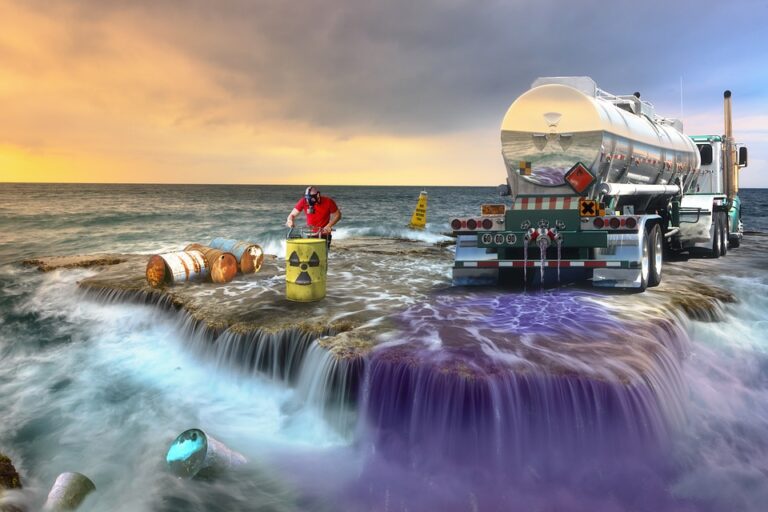Invisible Threat: How Project 2025 is Unleashing a Silent Wave of Pollution
In an era where environmental consciousness is paramount, the emergence of Project 2025 has become a lightning rod in the ongoing debate over industrial advancement versus ecological preservation. At its core, this initiative embodies a bold leap toward modernization, but it also conceals a burgeoning issue: a silent wave of pollution that is poised to disrupt ecosystems and compromise public health.
The Promise of Project 2025
Project 2025 was introduced with much fanfare, heralded as a transformative national initiative designed to propel technological advancement and economic revitalization. Encompassing a wide array of sectors—including energy, transportation, and manufacturing—the project aims to overhaul existing infrastructures through state-of-the-art technologies and innovations. Proponents argue that it will create jobs, boost efficiency, and position the nation as a leader in the global economy.
The Unseen Consequences
Despite these promising prospects, environmental scientists and activists are raising alarms about the unintended consequences lurking beneath the project’s glossy exterior. Among the most pressing concerns is the increased emission of pollutants that are either too small to be detected by conventional monitoring systems or are inadequately regulated under existing environmental laws.
Microplastics and Nanomaterials: A Growing Concern
One of the more insidious threats comes from the proliferation of microplastics and nanomaterials. Utilized across various industries for their durability and versatility, these microscopic particles are increasingly finding their way into natural ecosystems. Once released, they are nearly impossible to eliminate, persisting in the environment for decades and accumulating in the food chain. Their impact on human health remains a topic of rigorous scientific inquiry, with studies suggesting potential links to hormonal disruptions and other health issues. According to a 2021 study published in ScienceDirect, these materials can disrupt marine life, affecting not only aquatic organisms but also predators higher up the food chain, including humans.
The Rise of Invisible Pollutants
Moreover, the advanced technologies integrated into Project 2025, particularly in the energy sector, have inadvertently led to increased levels of invisible pollutants. Among these are certain volatile organic compounds (VOCs) and emissions from cutting-edge manufacturing processes, which can escape traditional detection methods. Although released in minuscule quantities, their cumulative effect poses a substantial risk to air and water quality. A report from the Environmental Working Group highlights that these VOCs can exacerbate respiratory conditions and contribute to ozone layer depletion, revealing a dire need for improved monitoring systems.
Regulatory and Monitoring Challenges
The infrastructure to adequately monitor and regulate these new forms of pollution is lagging. Current regulatory frameworks were designed to address more traditional forms of industrial emissions and pollutants, leaving gaps that allow modern contaminants to slip through undetected. This regulatory oversight underscores the critical need for updated policies that can effectively manage these emerging threats. The National Resources Defense Council has called for the implementation of real-time monitoring technologies to bridge these gaps and enforce tighter pollution controls.
A Call to Action
Environmental advocacy groups are calling for urgent action to address the invisible threats posed by Project 2025. They underscore the importance of developing advanced detection technologies, enhancing regulatory standards, and fostering greater transparency and accountability in industrial practices. Campaigners from Greenpeace have proposed collaborative efforts involving governmental agencies, the private sector, and the scientific community to spearhead initiatives focused on innovation in pollution detection and reduction.
In parallel, public awareness campaigns are being ramped up to educate citizens on the potential risks associated with these invisible pollutants and to encourage community involvement in conservation efforts. Initiatives like those by the Sierra Club aim to mobilize grassroots movements for environmental justice, focusing on conservation and pollution mitigation.
Conclusion
The advent of Project 2025 underscores a quintessential challenge of our time: the balancing act between progress and sustainability. While the pursuit of technological advancement and economic growth is undeniably crucial, it should not come at the expense of our environmental well-being. As the invisible wave of pollution threatens to undermine the very foundations of life, it becomes imperative that we chart a course that harmonizes development with the health of our planet. Through innovation, vigilant regulation, and collective responsibility, a sustainable future that benefits all is within reach.
In light of these revelations, it is vital for policymakers and citizens to remain vigilant and proactive. The world cannot afford to wait until these invisible threats manifest visible consequences. Action must be taken now to ensure that the promises of modernization do not overshadow the imperative of our environmental sustainability.
